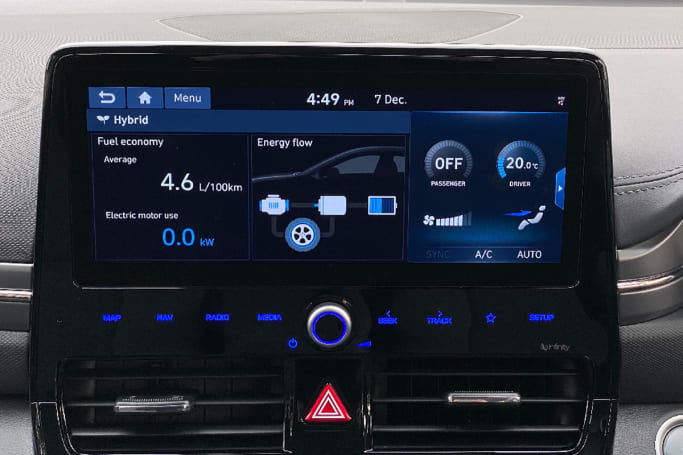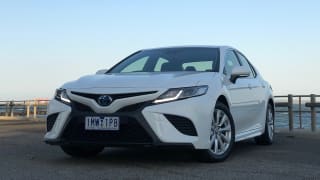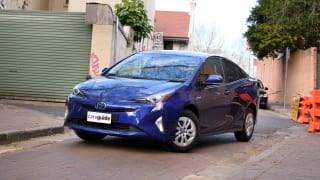The entry point to the Ioniq range comes in top-spec Premium for $39,990 or the car I had, the $34,790 Elite. Not sure who came up with that naming strategy, but there we are.
You'll get a cloth interior with a brand new 10.25-inch screen on the dash, an eight-speaker stereo, 15-inch alloy wheels that somehow look like hubcaps, dual-zone climate control, keyless entry and start, reversing camera, rear parking sensors, cruise control, sat nav, auto headlights (with automatic high-beam dipping), impressive safety features, powered and heated door mirrors, tyre-pressure monitoring and a full-size alloy spare.

That huge touchscreen looks great and hosts a very impressive new version of Hyundai's own software, or you can plug in your CarPlay or Android Auto-enabled phone. There is also DAB and the usual data screens about which way the power is flowing and from where.
The Ioniq Hybrid isn't a very cheap proposition but it's not an expensive one, either. Compared to the Toyota Corolla Hybrid, it's about the same price as a ZR, but is cheaper than a base Prius. Having said that, the Ioniq is more metal for the money.



















